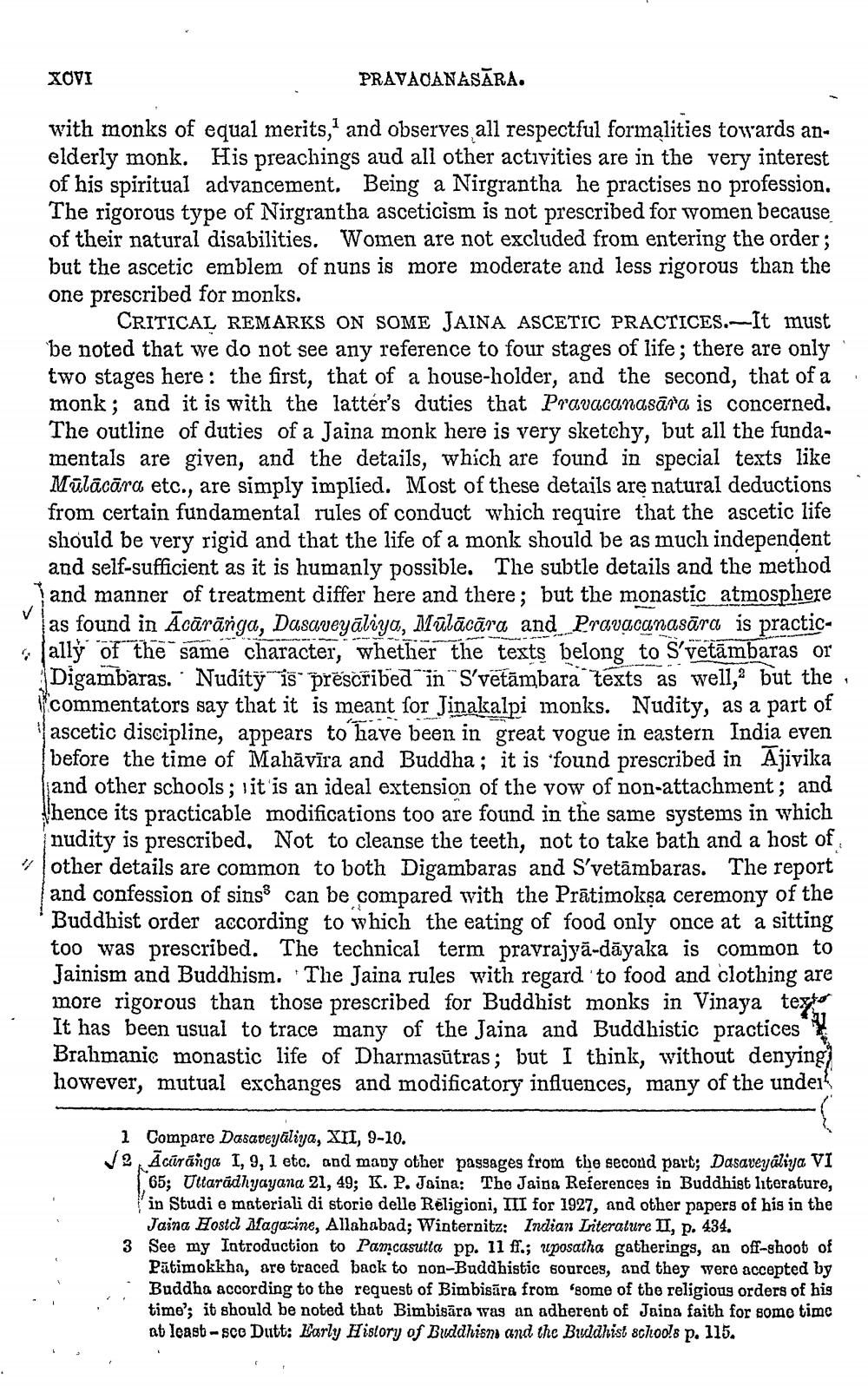________________
XOVI
PRAVACANASĀRA.
with monks of equal merits,' and observes all respectful formalities towards anelderly monk. His preachings aud all other activities are in the very interest of his spiritual advancement. Being a Nirgrantha he practises no profession. The rigorous type of Nirgrantha asceticism is not prescribed for women because of their natural disabilities. Women are not excluded from entering the order ; but the ascetic emblem of nuns is more moderate and less rigorous than the one prescribed for monks.
CRITICAL REMARKS ON SOME JAINA ASCETIC PRACTICES.-It must be noted that we do not see any reference to four stages of life; there are only two stages here: the first, that of a house-holder, and the second, that of a monk; and it is with the latter's duties that Pravacanasāra is concerned. The outline of duties of a Jaina monk here is very sketchy, but all the fundamentals are given, and the details, which are found in special texts like Mülācāra etc., are simply implied. Most of these details are natural deductions from certain fundamental rules of conduct which require that the ascetic life should be very rigid and that the life of a monk should be as much independent and self-sufficient as it is humanly possible. The subtle details and the method and manner of treatment differ here and there; but the monastic atmosphere as found in Ācārānga, Dasaveyaliya, Mālācāra and Pravacanasāra is practically of the same character, whether the texts belong to S'vetāmbaras or Digambaras. · Nudity is prescribed in "S'vetāmbara texts as well, but the commentators say that it is meant for Jinakalpi monks. Nudity, as a part of ascetic discipline, appears to have been in great vogue in eastern India even before the time of Mahāvīra and Buddha; it is 'found prescribed in Ajivika and other schools; \it is an ideal extension of the vow of non-attachment; and Whence its practicable modifications too are found in the same systems in which nudity is prescribed. Not to cleanse the teeth, not to take bath and a host of other details are common to both Digambaras and S'vetāmbaras. The report and confession of sins can be compared with the Prātimoksa ce Buddhist order according to which the eating of food only once at a sitting too was prescribed. The technical term pravrajyā-dāyaka is common to Jainism and Buddhism. The Jaina rules with regard to food and clothing are more rigorous than those prescribed for Buddhist monks in Vinaya texto It has been usual to trace many of the Jaina and Buddhistic practices Brahmanic monastic life of Dharmasūtras; but I think, without denying) however, mutual exchanges and modificatory influences, many of the under!
1 Compare Dasadeyaliya, XII, 9-10. V2, Ācūrānga I, 9, 1 etc. and many other passages from the second part; Dasaveyaliya VI
165; Uttaradhyayana 21, 49; K. P. Jaina: The Jaina References in Buddhist literature, in Studi e materiali di storie delle Religioni, III for 1927, and other papers of his in the
Jaina Hostd Afagazine, Allahabad; Winternitz: Indian Iriterature II, p. 434. 3 See my Introduction to Pamcasutta pp. 11 ff.; uposatha gatherings, an off-shoot of
Pātimokkha, are traced back to non-Buddhistic sources, and they were accepted by Buddha according to the request of Bimbisāra from 'some of the religious orders of his time'; it should be noted that Bimbisāra was an adherent of Jaina faith for some time at leasb-sco Dutt: Early History of Buddhism and the Buldhist schools p. 115.




